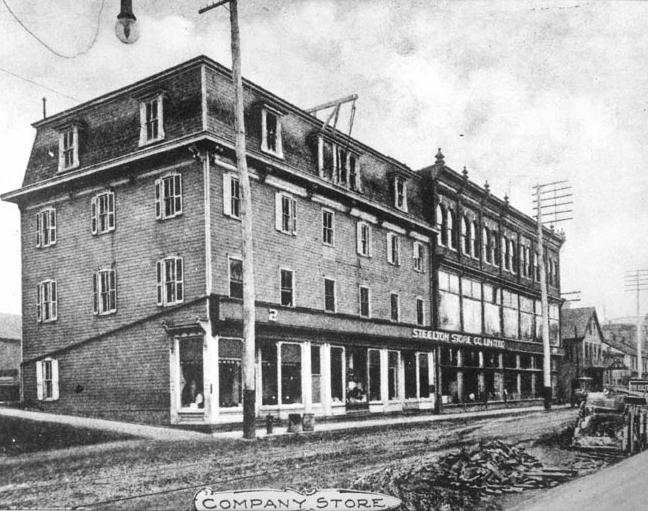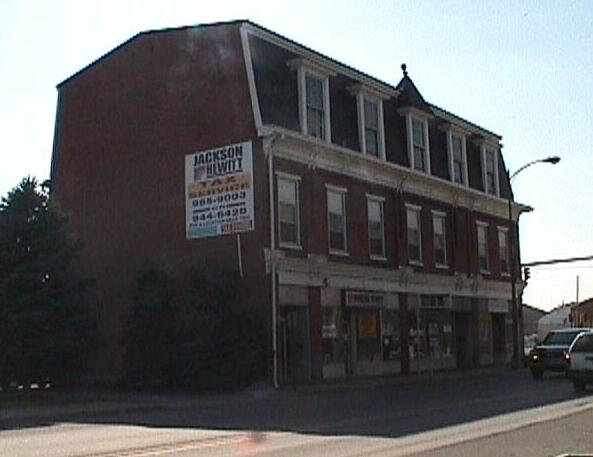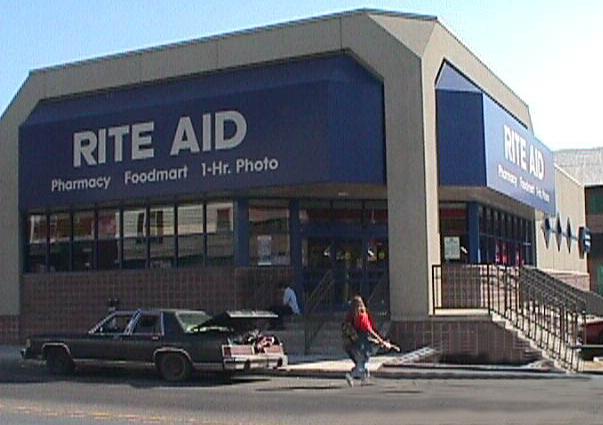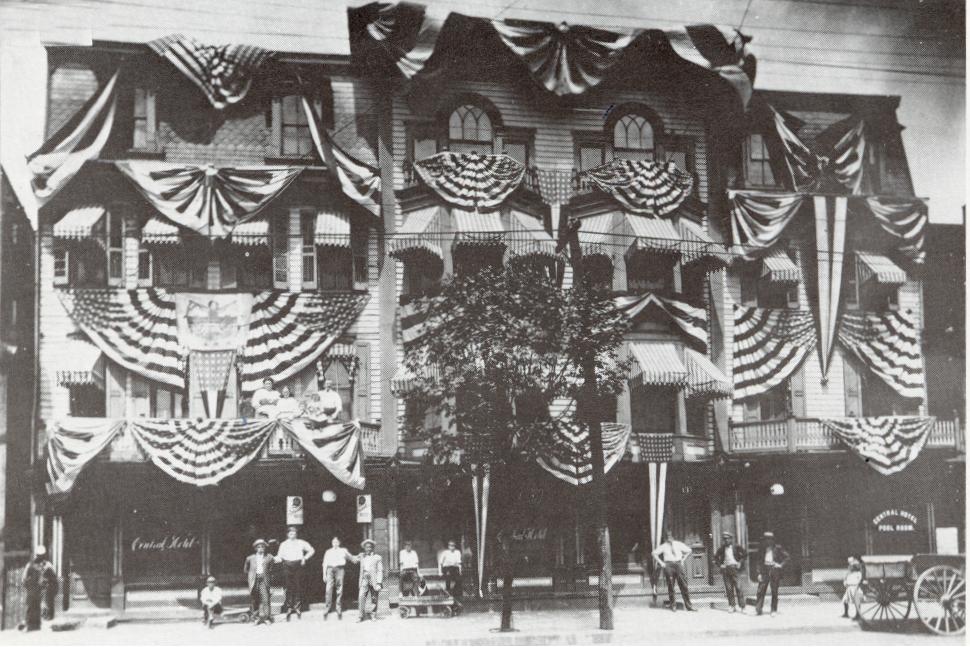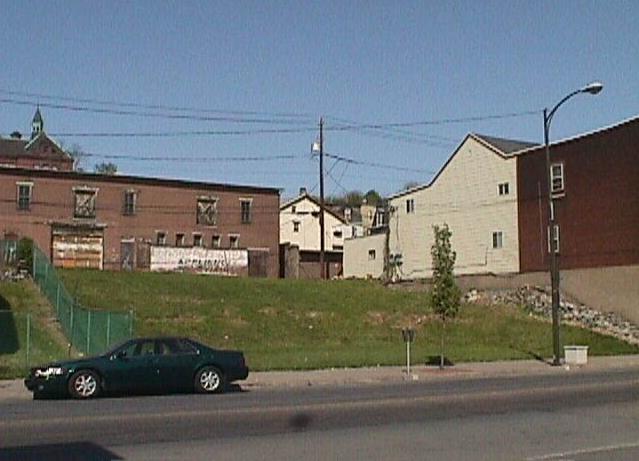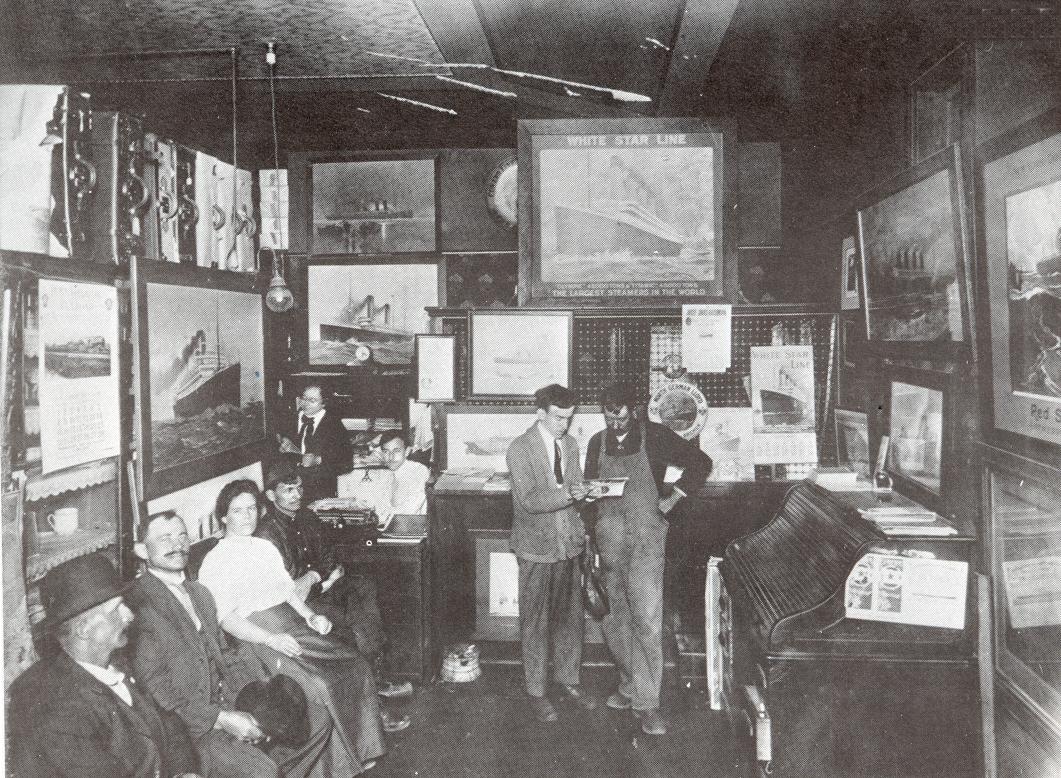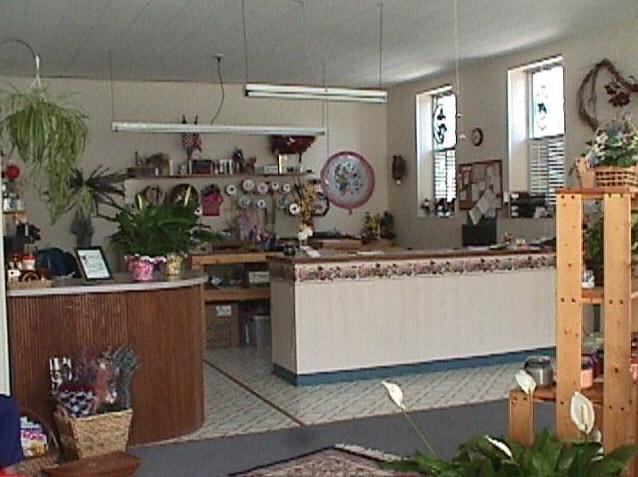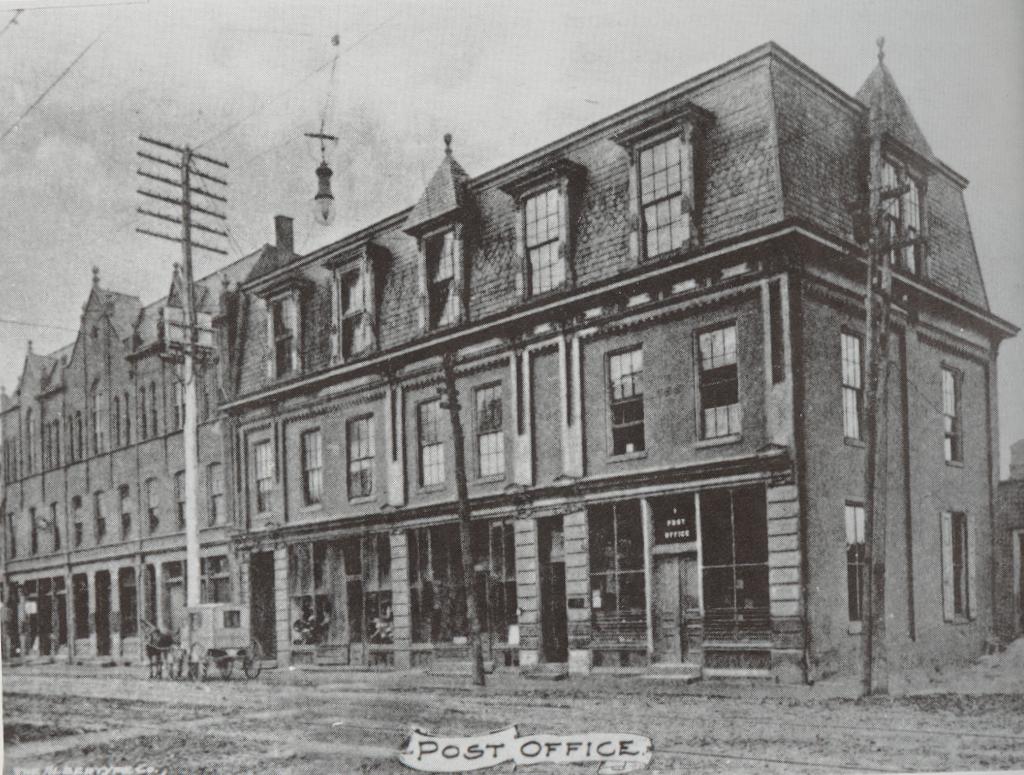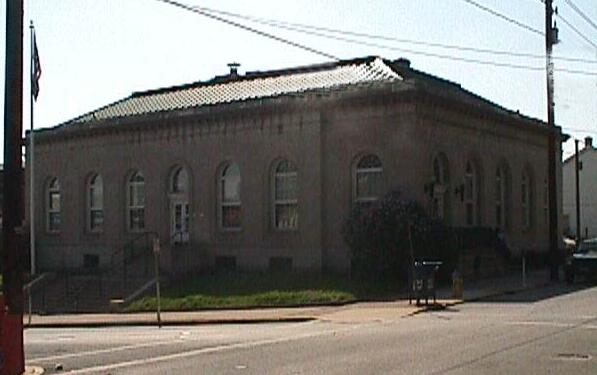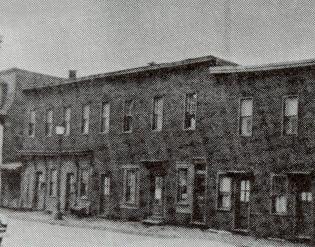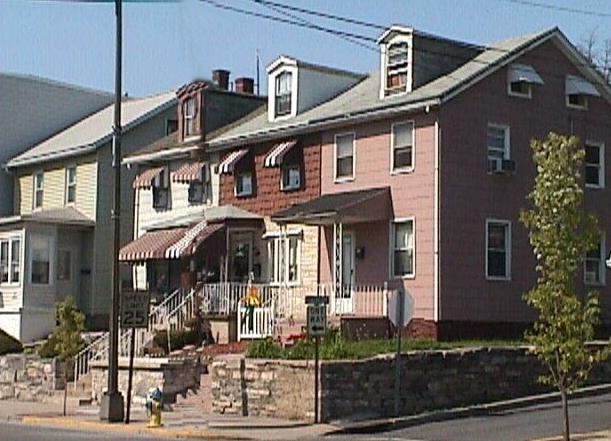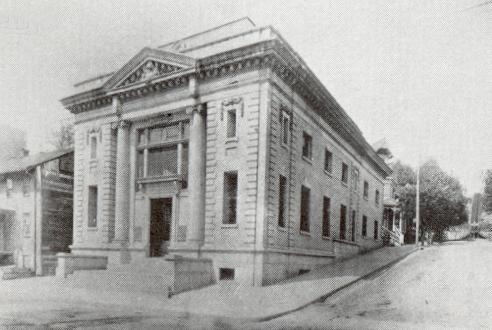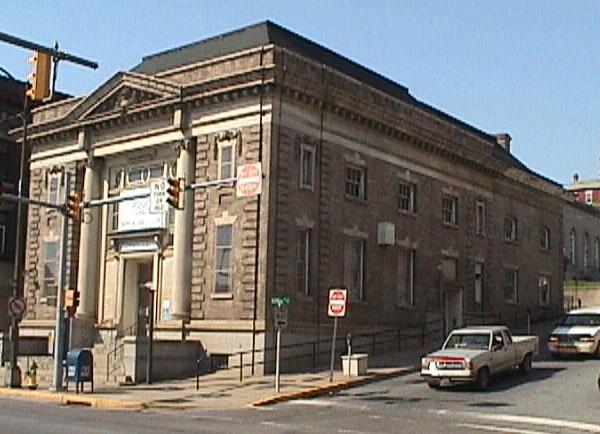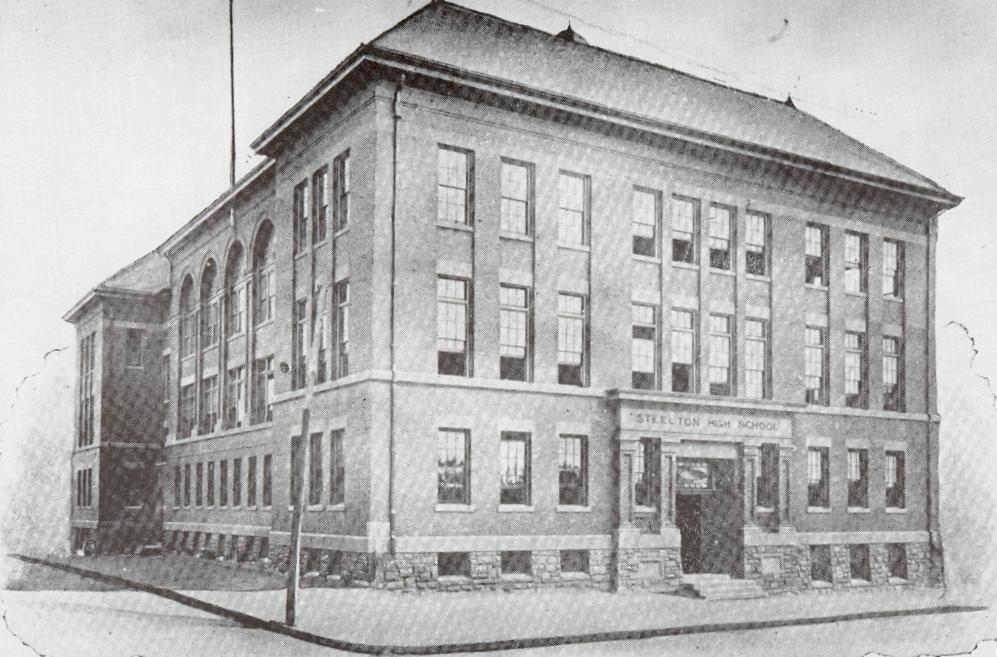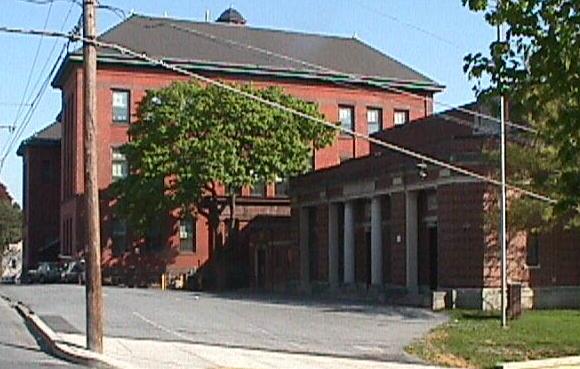That Was Then, This Is Now
2 Front Street
- 1880 – Nathaniel S. Frencil’s store-room known by younger people as the Company Store. Courtesy of Steelton, Pennsylvania Stop,-Look,-Listen
- 2001 – The building that once held the Company Store is now Jackson-Hewitt Tax Service
“Steelton is a town built around a company. I don’t want to say a company town because they didn’t own the businesses like a regular company town does, but it was the primary employer there.”
– Mitch Ivanoff, March 9, 2001
This building started out as the Bent Store, but was later changed to Steelton Store Co., Ltd. Here the employees bought their purchases to be covered on “pay day” via payroll deduction. The store had knowledge of the time worked and allowed credit accordingly. It is apparent that many of these steel workers were quite familiar with those words, “I owe my soul to the Company Store.
120-126 Front Street
- 1890’s – Abraham B. Dunkle Furniture Store
- 2001 – Rite Aide Pharmacy
Small businesses flourished in Steelton in those early years. Abraham B. Dunkle had a furniture store at 120-126 North Front Street. Later he added an associate and the firm became known as Dunkle & Knoderer’s Undertaker and Furniture business. This type of establishment was common in those days.
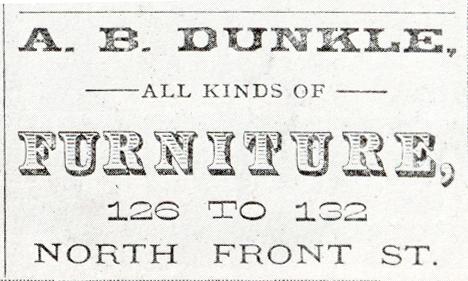
One of many advertisements for businesses operating in Steelton during the 1800s. Courtesy of Steelton, Pennsylvania Stop-Look-Listen
129-135 South Front Street
- Early 1900’s – Central Hotel owned by the Shelley Brothers
- 2001 – Empty grass lot
Situated at 129-135 South Front Street, the Central Hotel was once two separate businesses. During the 1880’s, Chauncey Wilder operated 129-133 South Front Street which was known as the second Ward House. Samuel S. Alleman was the owner of 133-135 South Front Street known as the Central Hotel. In the early 1900’s, the hotel was taken over by the Shelley Brothers and was later turned into Shelley’s Restaurant.
Hotels were once a significant part of Steelton. Weary travelers often stopped off on their way through town. Men doing business with the steel plant, such as inspectors, roomed there and recent immigrants sought out the hotel bars to meet other men of their nationality who shared a common language. Tired steel workers would stop for a “growler” of beer on their way home from a long day of work. Today, hotels are a thing of the past in Steelton. Presently, there are no hotels in the borough of Steelton. Most lots that were once occupied by these building are now vacant.
263 South Front Street
- 1914 – Josef Jiras’ Steamship Ticket Office
- 2001 – Dmitrovic’s Elegant Pickings
Many of the immigrants that came to Steelton worked, lived frugally, and saved what little wages they earned. Eventually, with the money that they saved, they were able to make arrangements to bring some of their relatives to Steelton from their homeland. One of the people who managed such a steamship ticket office to make these arrangements was Josef Jiras’. Pictured above are patrons purchasing steamship tickets. Today the same room holds gifts and flowers of Dmitrovic’s Elegant Pickings.
2nd & Locust
- 1871 – “Steel Works” Post Office
- 2001 – Steelton Post Office
Steelton, previously known as Baldwin, was incorporated in February 1880. As the steel mill and town population grew, a Post Office was established, initially under the name, “Steel Works,” then later changed to the Steelton Post Office. Today, the Post Office remains in the same location.
300 Block South Front Street
- 1906 – The Deutscher Quartet Club met here in the Markley’s Hall until 1913
- 2001 – Currently Steelton Residential Homes
“Most of the houses here were built by the Bethlehem Steel Company and that was so that they could house the people and as time developed, the people purchased the homes.” – Barbara Barksdale
Today, Steelton has a population of 65,710 people living in a three mile radius. Of the thirty-three ethnic groups that live in the town, the majority is divided between both Whites (69.42%) and African Americans (25.42%). According to 1990 US Census data, the 10,054 people fall below the poverty line while approximately 5,655 households make more than $75,000 a year.
Front & Locust Streets
- 1903 – The Steelton National Bank
- 2001 – The Boys’ and Girls’ Club of Steelton
As more businesses were being built in the town, the need for money and credit increased. The Steelton National Bank was thus established at the turn of the century for this very purpose. Today, the Steelton Boys and Girls Club calls this building at the corner of Front and Locust home. The kids use the old safes as storage closets for their coats and arts supplies.
The Felton Building
- 1900 – Steelton High School
- 2001 – Steelton-Highspire Elementary School
Erected in 1900, the Felton building contained Steelton High School, which included the main room, five classrooms, chemical and physical laboratories, seven grammar school rooms, two teachers’ rooms, public library, Office of the Board, Superintendent and Principal, and an assembly hall capable of seating more than twelve hundred people. A gymnasium was built onto the front of the building by 1939, and the same building remains intact today as the Steelton-Highspire Elementary School.
